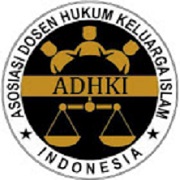OTONOMI KHUSUS DAN IMPLIKASI YURIDIS LEGISLASI HUKUM ISLAM DI NANGROE ACEH DARUSSALAM (NAD)
DOI:
https://doi.org/10.24256/maddika.v2i1.2484Keywords:
Special autonomy, Islamic law legislation, Nangroe Aceh DarussalamAbstract
Aceh has a very long history of Islam stretching back to the first-century hijriyah. The practice of Islamic teachings, especially the legal aspects, has spread to the government level. This is the historical basis for the implementation of Islamic law in Bumi Rencong. The special autonomy imposed in Aceh is essentially related to the granting of authority to regulate part of the legal order of Acehnese people's lives with Islamic law. This literature research uses a normative legal approach to examine the content of Aceh's special autonomy and its implications for legal legislation. This study finds that Aceh's special autonomy has implications for Islamic law legislation in the form of qanuns as a formal form of the implementation of special autonomy, especially the implementation of Islamic law. Most of the tools for implementing Islamic law have been completed, although there are still shortcomings and challenges. These challenges include incomplete implementation rules and restrictions by other laws and regulations.       Â
References
A. Hasanuddin Yusuf. “Sejarah Dan Perkembangan Islam Di Aceh.†Jurnal Ar- Raniry 82 (2003): 5.
Aceh, Dinas Syariat Islam Pemerintah. “Perda Atau Qanun,†n.d. http://dsi.acehprov.go.id/perda-atau-qanun/.
Bagir Manan. Menyongsong Fajar Otonomi Daerah. Yogyakarta: Pusat Studi Hukum Fakultas UI, 2001.
Bahri, Syamsu. “Pelaksaan Syariat Islam Di Aceh Sebagai Bagian Wilayah Negara Kesatuan Republik Indonesia (NKRI)â€.†Dinamika Hukum 12, no. 2 (2012): 360.
Daud Rasyid. Formalisasi Syari’at Di Serambi Mekkah, Dalam Buku Syari’at Islam Yes, Syari’at Islam No. Jakarta: Paramadina, 2001.
Hasan Basri. “Kedudukan Syariat Islam Di Aceh Dalam Sistem Hukum Indonesia.†Kanun 13, no. 55 (2011).
Husni Jalil dkk. “Implementasi Otonomi Khusus Di Provinsi Aceh Berdasarkan Undang-Undang Nomor 11 Tahun 2006.†Kanun 51 (2010): 209.
M.Syadli ZA. “Pendidikan Islam Di Kesultanan Aceh: Ulama, Meunasah Dan Rangkang.†Jurnal Al Qalam 20, no. 96 (2003): 133–39.
Misran. “Pelaksanaan Syariat Islam Di Aceh.†Legitimasi 1, no. 2 (2012): 2.
Muammar Arafat Yusmad. Penerapan Sanksi Pidana Syariat Islam Di Aceh. Palopo: LKP STAIN Palopo, 2009.
Nur Rohim Yunus. “Penerapan Syariat Islam Terhadap Peraturan Daerah Dalam Sistem Hukum Nasional Indonesia.†HUNAFA: Jurnal Studia Islamika 12, no. 2 (2015): 254.
Republik Indonesia. TAP MPR Nomor IV/MPR/1999 tentang Garis-Garis Besar Haluan Negara Tahun 1999-2004. (1999).
———. Undang-Undang Dasar RI Tahun 1945 (1945).
———. Undang-Undang Nomor 11 Tahun 2006 tentang Pemerintahan Aceh (2006).
———. Undang-Undang Nomor 21 Tahun 2001 tentang Otonomi Khusus bagi Provinsi Papua (2001).
———. Undang-Undang Nomor 32 Tahun 2004 tentang Pemerintahan Daerah (2004).
———. Undang-Undang Nomor 44 Tahun 1999 tentang Penyelenggaran Keistimewaan Provinsi Daerah Istimewa Aceh. (1999).
Sirajuddin M. Lagislasi Hukum Islam Di Indonesia. Yogyakarta: Pustaka Pelajar, 2008.
Yasa Abubakar, Al. Bunga Rampai Pelaksanaan Syariat Islam. Aceh: Dinas Syariat Islam Provinsi NAD, 2005.
Yusni Saby. “Pelaksanaan Syari’at Islam Di Aceh: Suatu Peluang Dan Tantangan.†Jurnal Kanun, 2002, 566.
Downloads
Published
How to Cite
Issue
Section
Citation Check
License
Authors who publish in this journal agree to the following terms:
- Authors retain copyright and grant the journal right of first publication with the work simultaneously licensed under a Creative Commons Attribution License that allows others to share the work with an acknowledgment of the work's authorship and initial publication in this journal.
- Authors can enter into separate, additional contractual arrangements for the non-exclusive distribution of the journal's published version of the work (e.g., posting it to an institutional repository or publishing it in a book), with an acknowledgment of its initial publication in this journal.
- Authors are permitted and encouraged to post their work online (e.g., in institutional repositories or on their websites) before and during the submission process, as this can result in productive exchanges and earlier and greater citations of published work.




















